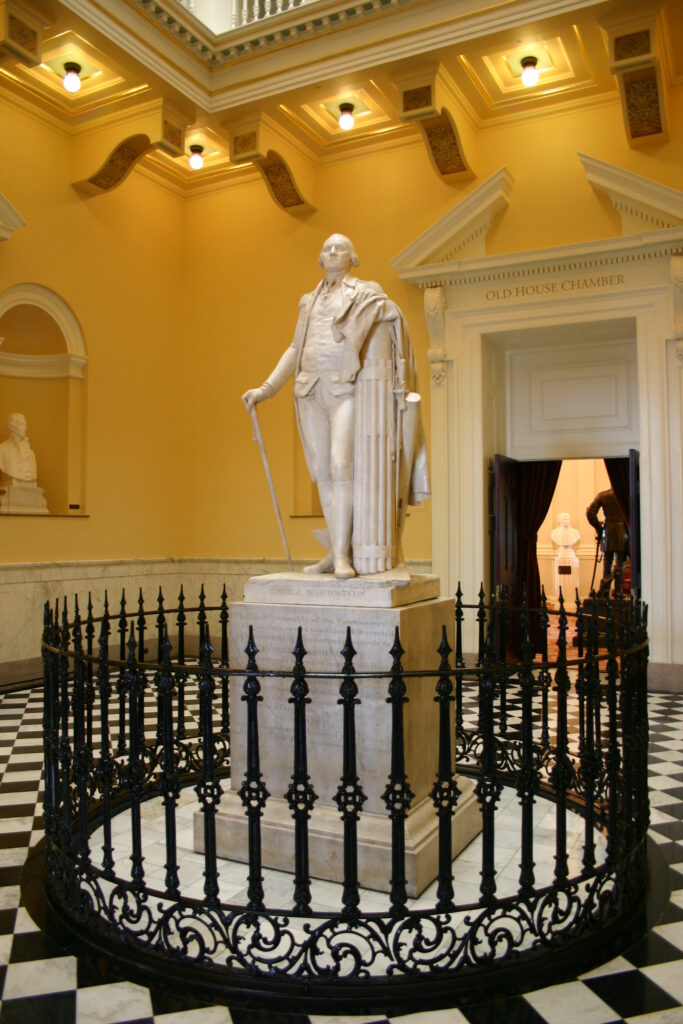Houdon Statue of George Washington
A magnificent life-size marble statue of George Washington stands under an interior dome in the two-story Rotunda, located in the central portion of the Capitol. In June of 1784 the General Assembly commissioned this statue “of the finest marble and best workmanship” as a tribute to Virginia’s most respected citizen-soldier. Governor Benjamin Harrison wrote to Thomas Jefferson, who was serving on a diplomatic mission in Paris, and asked him to engage a sculptor.
Jefferson secured the services of Jean-Antoine Houdon, a skilled French artist. In the fall of 1785 Houdon visited Mount Vernon to study General Washington. He made a plaster mask of Washington’s face, took detailed measurements of his body, and modeled a terra cotta bust.

The statue was sculpted in France from fine Carrara marble and shipped to America early in 1796. Placed in the Rotunda on May 14th of that same year, the statue has been on nearly continuous display ever since. It was viewed by many of Washington’s contemporaries, all of whom attested that it was a perfect likeness.
Houdon’s statue alludes to the similarities between Washington and the ancient Roman General Cincinnatus who, when Rome no longer needed him, gave up his military power and returned to the simple life of a farmer. The artist carefully balanced the military and civilian elements of Washington’s career: his sword is by his side, and he rests his left hand on a fasces (a bundle of rods, which was a Roman symbol of power), but he carries a civilian walking cane and stands next to a plow. Washington wears his Revolutionary uniform, but his head is uncovered and his facial expression is fatherly. Houdon’s monument to America’s foremost hero recalls Washington’s life as a soldier, statesman, and virtuous private citizen.
